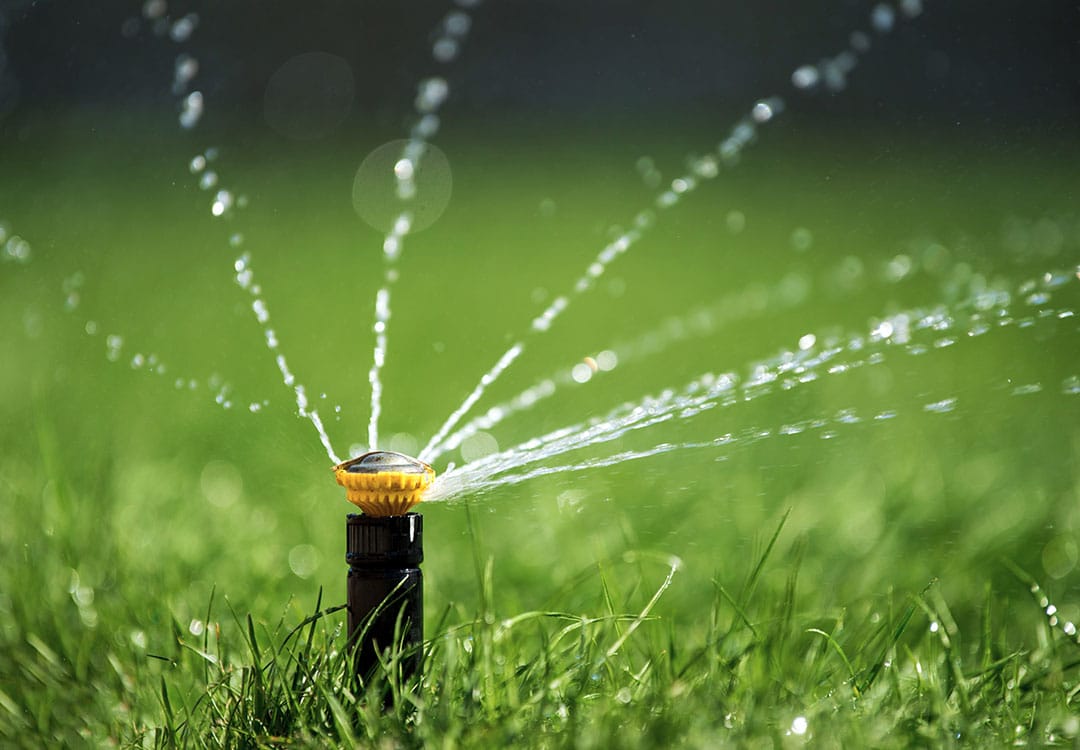How to Water

The first month’s watering of your turfgrass sod is very important. Begin watering immediately after the sod is installed.
It is critical to water new sod within a half-hour after it is laid on the soil if tempreatures are above 70 degrees or it is windy. Apply at least 1 inch of water so that the soil beneath the turf is very wet. Ideally, the soil 3 to 4 inches below the surface will be moist.
Sod roots supply the plant with water, but for 2-4 weeks after installation, there are no roots in the soil that the sod is being laid on. Because of this, water needs to be applied to new sod often enough to keep the roots and dirt that was shipped with the sod wet at all times during daylight hours. This could be as often as every 2 hours. There in no need to water new sod at night because it uses very little water at night.
Tip #1:
In order to see if the soil is wet enough, pull back a corner of the turf and push a screwdriver into the soil. It should push easily into the soil and should show moisture to a depth of 3-4 inches. Add more water if there is not moisture there. You need to water 4-5 times daily, keeping the grass wet continuously for the first 3-4 weeks. The 1/2-1 inch of soil that comes with the sod can typically only hold moisture for 2 hours before the sod is needing more moisture.
Tip #2:
Make certain that water is getting to all areas of your new lawn. Corners and edges are easily missed by many sprinklers and can dry out faster than the center portion of your new lawn. Also, areas near buildings dry-out faster because of reflected heat and may require more water.
Tip #3:
Runoff may occur on some soils and sloped areas before the soil is adequately moist. To conserve water and ensure adequate soak-in, turn off the water when runoff begins, wait 30-60 minutes and restart the water on the same area, repeating as needed.
For the next two weeks (or until your roots are established), keep the below-turf soil surface moist with daily waterings of approximately 1/4 inch each. Nighttime watering is not recommended, as there is very little water loss during those hours.
Tip #4:
As the turf starts to knit its new roots into the soil, it will be difficult and/or harmful to pull back a corner to check beneath the turf, but you can still use a screwdriver to check moisture depth by pushing it through the turf and into the soil.
Tip #5:
If possible, after sod establishment, water your lawn as early in the morning as possible to take advantage of lower water evoporation and calmer winds.
Tip #6:
During the remainder of the growing season, most lawns will do very well with a maximum total of one inch of water a week, coming either from rain or applied water. Soil conditions may dictate that the amount is applied in two settings, two to three days apart. This amount of water, properly applied, is all that is required for the health of the grass, providing it is applied evenly and saturates the underlying soil to a depth of 4 to 6 inches.
Tip #7:
To tell if your lawn is getting too dry, observe it in the late afternoon. If it is slightly blue, or if blades of grass look thinner, the grass needs more water. If footprints seem to last quite a while after the grass is walked on then it also needs more water.
Tip #8:
Grass doesn’t waste water, poeple waste water. The best way to save water while irrigating a lawn is to apply just enough water, and apply it evenly over the entire lawn.
Contact us
For questions on our products, services or process, or to schedule a delivery or installation, please contact us.
